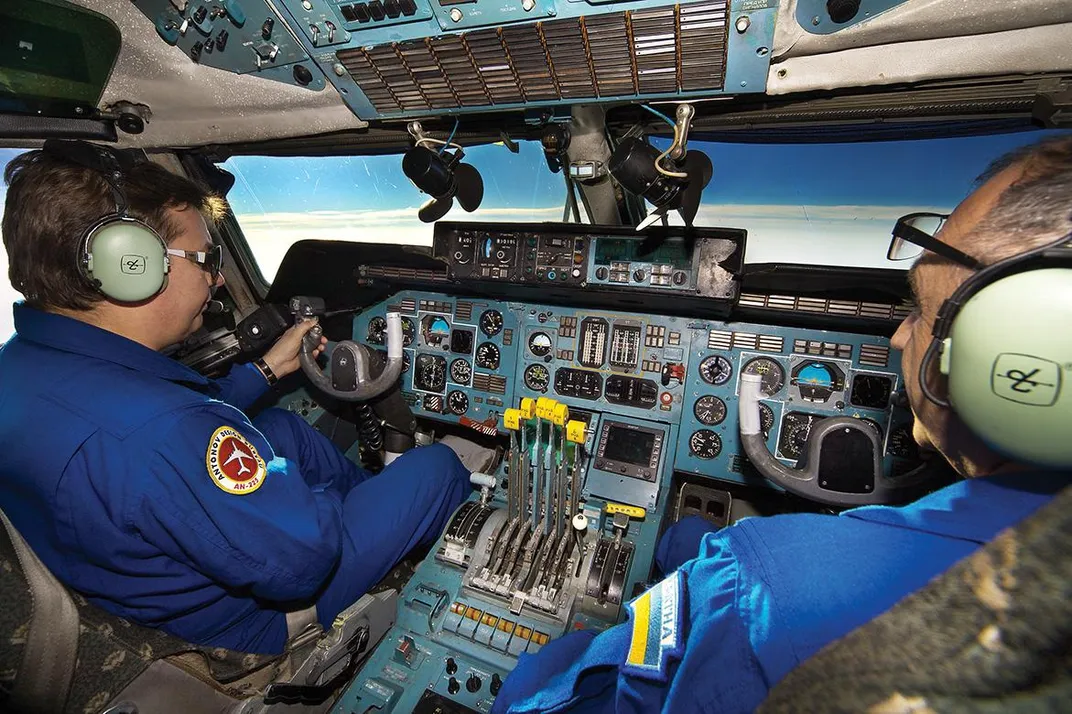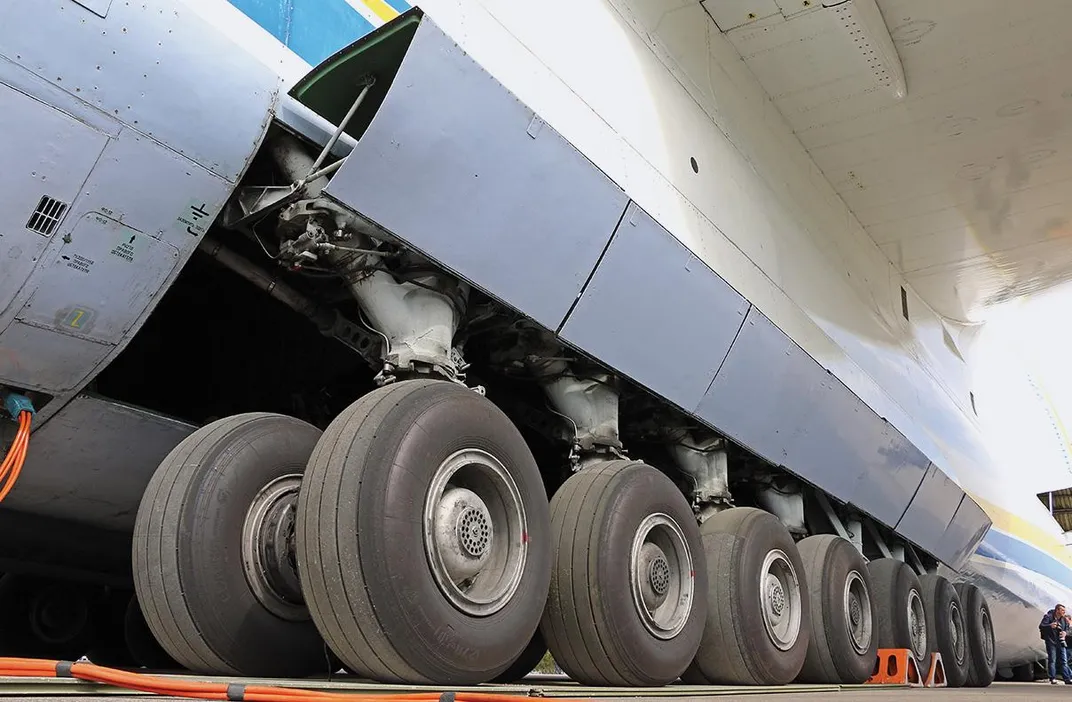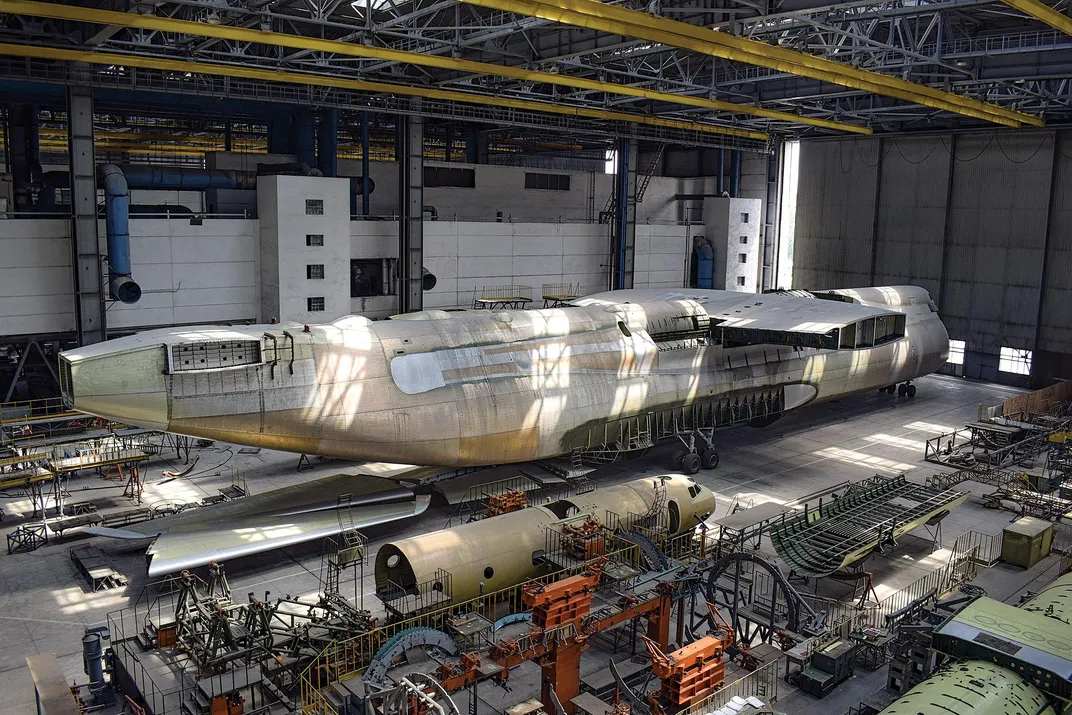The Biggest Airplane Flying Today
Need to move something enormous? Hire this Ukrainian giant.
:focal(1463x1605:1464x1606)/https://tf-cmsv2-smithsonianmag-media.s3.amazonaws.com/filer/91/ab/91abef31-5986-487f-8c65-1d8a9182d708/10j_am2021_16874_live.jpg)
When Monika Beckfeld stepped out of her first Antonov An-225 flight, she was astonished. It was a short hop, barely more than an hour, and yet the Atacama desert she departed from had been replaced by a tropical rainforest. “What is interesting about flying on the An-225 is that there are no windows,” she says. “You have no idea what is happening. You can maybe feel it in your stomach, if it’s takeoff or landing. We took off from the desert in Chile and when the doors opened in Bolivia, we were in the middle of a jungle!”
The flight was the first in a series of 12 consecutive round trips—an operational record for the An-225—to deliver a dozen 160-ton generators from Iquique, Chile, to Chimoré Airport in southern Bolivia. Beckfeld, who works for German cargo specialist Hansa Meyer, had chartered the airplane on behalf of global powerhouse Siemens, which was building three power plants in the region. “We saved about three to four months using the An-225 compared to road shipping,” she says. “The road distance was about 700 miles and would have required special transport equipment that is hard to find in the area. The route was also unforgiving, through the Andes mountain range and across bridges, rivers, and different climatic areas.”
Airlifting the cargo wasn’t easy either. “The generators initially did not fit into the cargo bay of the aircraft,” says Beckfeld. “There was some engineering work to be done in order to make them a bit smaller.” Even so, they were too heavy for the cargo floor and required special damping panels. The Chilean airport did not have a tow truck powerful enough to move the An-225, so Antonov had to fly in its own truck from Europe. The Bolivian airport closed at night, forcing the crew to fly out at dawn so that the delicate unloading operations could be completed before sundown. But in the end, all 12 generators were delivered safe and sound.
The An-225 has completed dozens of jobs like this one since starting its second life as a super-heavy cargo airlifter. Its original mission was very different.
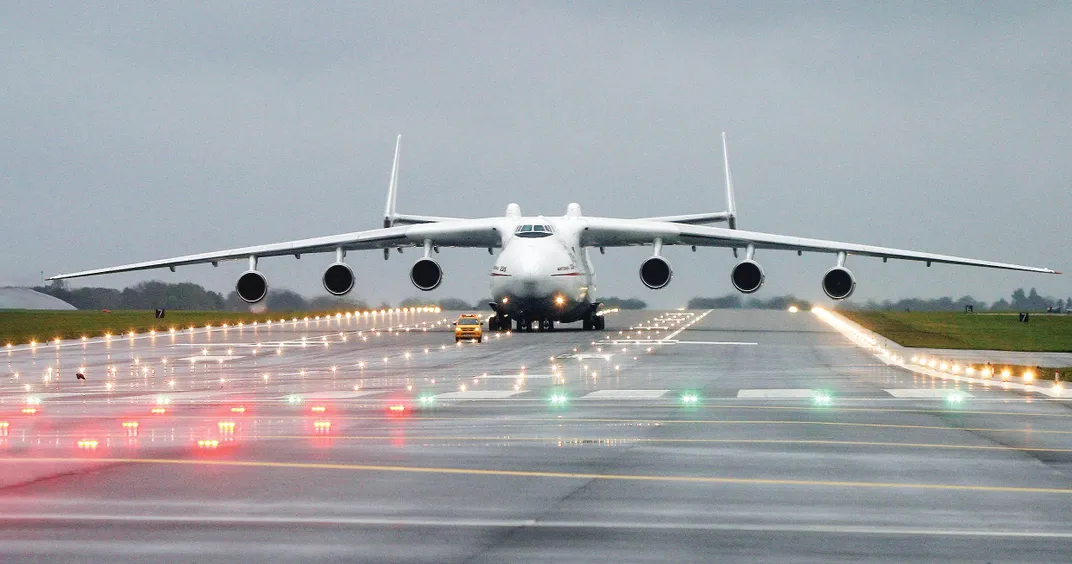
Space Quest
The An-225 is big in every way. It’s the longest and heaviest airplane flying today, and its wingspan is surpassed by only one other aircraft (the twin-fuselage Stratolaunch, which has flown only once). Its maximum takeoff weight of 640 metric tons is unparalleled. As tall as a six-story building, the An-225 has a cargo hold that is longer—at 142 feet—than the distance of the Wright Flyer’s first flight.
The airplane is so large because it was meant to carry the Buran—the Soviet space shuttle—and its rocket components from their building site near Moscow to the launchpad at Baikonur Cosmodrome. Because Baikonur is some 1,500 miles away from Moscow, building an airplane was cheaper than building a new highway across difficult terrain.
Designing it fell to Ukraine’s fabled Antonov Design Bureau, which had already developed a massive cargo transporter, the An-124. A lot was borrowed from the 124, including the fuselage, which was merely lengthened. As a result, the An-225 was finished in just three and a half years. “Wings and engines are also the same, with just a new center section and one extra engine per wing, for a total of six,” says Andrii Sovenko, a former An-225 technical crew member and author of the book Wings Above the Planet: The History of Antonov Airlines. “All onboard systems and equipment, as well as the crew cabin, are almost completely borrowed from the An-124.”
Working off the An-124 platform didn’t mean that making the An-225 was easy, Sovenko adds, because the project still involved high technical risk and intensive engineering; however, the main structural and technological problems—avionics, engines, power systems, and more—had already been solved during the design phase of the earlier aircraft.
Superplane
The An-225 was rolled out in Kyiv on November 30, 1988, to a crowd of thousands. It had been named “Mriya,” meaning “dream”—not a Russian word but a Ukrainian one, a first for a Soviet aircraft. “This was a very bold step by Petr Balabuev, the An-225’s chief designer, who was Ukrainian,” says Sovenko. “The Communist Party could have well accused him of Ukrainian nationalism.”
Three weeks later, veteran Antonov pilot Oleksandr Galunenko guided the airplane, whose NATO reporting name is “Cossack,” on its first flight. “I felt joy for the fact that our designers had created such a miracle, a super-plane,” he says. “I personally had nothing to report to them about any flaws.”
In early 1989, the An-225 set 110 world records during a single flight, including speed along a closed route and altitude while carrying a cargo load of over 150 metric tons, but its future appeared dubious. Even before the collapse of the Soviet Union, the slow progress of the Buran project and declining relations between Russia and Ukraine spelled trouble. But the airplane was already becoming a popular sensation. “In the late 1980s, Mriya was perceived as a real wonder,” says Sovenko. “Its overall size and the carrying capacity of 250 tons was mind-blowing. At the 1989 Paris Air Show, it was the number-one exhibit.”
When Captain Galunenko first flew the An-225 to the United States, he wasn’t ready for the reaction he would get. After a stop in Seattle, the airplane landed in Oklahoma City to take part in an airshow. It was June 1990, and the Cold War had yet to end.
“People stood in line for hours to get on board,” Galunenko says. “But everyone believed that the airplane was made by Boeing, and they asked me in which state it was built. I said it was built by Antonov in Ukraine, but nobody knew where it was. So we decided to take a small political map of the world and glue it to the wall so that, when a visitor asked where the airplane was from, we would point to Kyiv and Ukraine on the map.”
The An-225 then went on a world tour with stops in Prague, Vancouver, Montreal, Dubai, Singapore, Columbus, and Las Vegas. It also made its first commercial flight, carrying a 110-ton tractor to eastern Siberia. But the 1991 dissolution of the USSR had left it without a primary mission after just 13 test flights with the Buran. With no further demand for its services and enormous running costs, it had nowhere to go but long-term storage.
In April 1994, after 339 flights and 671 hours in the air, the six engines were removed at Kyiv and the An-225 was grounded.
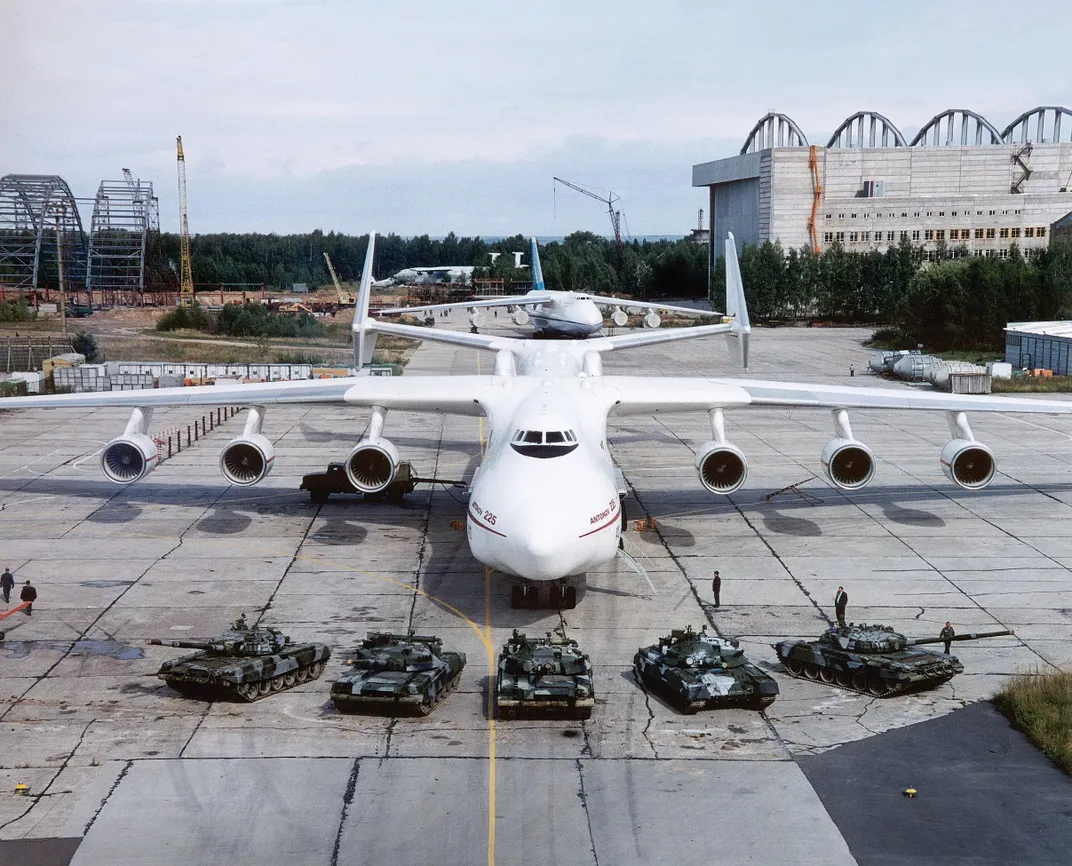
Second Life
After being laid up for seven years, the An-225 was jolted back to life. “The aircraft was not resurrected for one specific reason but rather [because of] a chain of small events, indicating that it could be effectively used as a unique commercial vehicle,” says Sovenko. “Proposals [to Antonov] came from the likes of Siemens, General Electric, and Airbus for the transportation of large pieces of cargo. By the end of the 1990s, there was significant potential demand.”
Antonov performed radical modernization work that transformed the An-225 from a military airplane designed for the USSR into a commercial aircraft capable of traveling worldwide. Among other things, a new radio and collision-avoidance systems were installed, and the cargo floor and forward ramp were reinforced. The airplane was back in the sky on May 7, 2001, and a month later it flew once again to the Paris Air Show, this time looking for customers.
Hungry for more world records and the resulting publicity, Antonov rolled five Ukrainian army T-80 tanks, weighing 253 metric tons, into the hold of the refurbished An-225, which took off with Galunenko at the controls on September 11, 2001. “Of course, we didn’t know what was happening in America, and we were later confronted with the horrors that we saw on television,” he says. “On the flight itself, we went for the maximum load the aircraft could take and flew a route with international commissioners who recorded 124 world records during that one flight.”
After carrying the first commercial cargo of its new career—187 tons of rations from Germany for American military personnel stationed in Oman—in December 2002, the An-225 flew from New York’s John F. Kennedy International Airport to Entebbe, Uganda, carrying 83,000 boxes containing Christmas presents from North American children to Ugandan children.
In September 2003, the airplane went on a tour de force of 41 flights over 29 days, carrying up to 193 tons of cargo at a time. During this period, it delivered more than 800 metric tons of equipment and humanitarian aid to armed forces in the Middle East. “I was a member of the Mriya crew in 2003 and flew it from the USA to Iraq, then Afghanistan, then to Italy, Bahrain, Azerbaijan, Iceland and again to the USA—dozens of airports,” says Sovenko. “In each, people waited for the An-225 to arrive, came to see the airplane and its crew, asked for souvenirs. Often these were airfield employees, and in some cases they even delayed the loading and unloading of the aircraft. Mriya was a real star.”
To this day, the airplane attracts crowds everywhere it goes because it doesn’t fly very often. “The biggest crowd I remember was in Australia in 2016. There were 15,000 people at the airfield to see the plane,” says Captain Dmytro Antonov (no relation to the founder of the company), one of just 10 pilots certified to fly the big transport. The airplane has a flight crew of six: two pilots, two flight engineers, a navigator and a radio operator. Backups and the technical crew bring the total to 22 people for commercial flights. The cabin, perched atop the cargo bay, has a lounge area for the crew with a galley and a dozen sleeping bunks. To hold tight during turbulence, a rope runs along the ceiling.
“It’s not so easy to taxi the An-225—you need to check for obstacles at all times,” Antonov says, adding that air traffic controllers often ask him to perform low passes on airfields, even when they’re not the airplane’s destination. “Flying the An-225 makes me very proud. There’s only one in the world. It gives me butterflies in the stomach.”
Custom Frames
The An-225 holds the record for the heaviest single piece of cargo ever flown, at 187.6 tons: a generator airlifted in 2009 from Frankfurt, Germany to Yerevan, Armenia, for the construction of a power plant. “It took six months to prepare a flight of the duration of just five hours,” says Andriy Blagovisniy, commercial director of Antonov Airlines, the division of the Antonov company that operates the An-225. “It was a big challenge to distribute the weight from such a heavy piece on the cargo floor, because it’s made of a light metal structure and a concentrated load can damage it,” he says.
The cargo floor can withstand only 10 tons per running meter, so heavy pieces require a metal frame that wraps around them like a box, balancing out the load. “Cargo is not usually ready for air transport but rather for sea shipping,” explains Viacheslav Belozerov, an Antonov load planner. “Any item weighing more than 120 tons needs a custom-built frame. We first send the cargo specifications to the Antonov Design Bureau in Kyiv, and our designers come back with ideas in maybe one or two weeks, after which the customer can order the production of the final frame.”
The airplane cannot rest on its landing gear when taking on such heavy loads because the tires would explode; instead, it sits on built-in hydraulic struts capable of bearing the weight. To facilitate the loading of the cargo, the nose gear retracts, allowing the front of the aircraft to lower to the ground—a maneuver known as the “elephant kneel.”
Because Antonov is not a courier, but simply an air freighter, its clients are usually freight forwarders—companies that oversee the door-to-door delivery of cargo on behalf of its manufacturer or recipient and that charter the An-225 for the airborne portion of the journey. “Once the forwarder delivers the cargo to the airport, we open the aircraft and prepare it for loading, which usually takes about two hours,” says Belozerov. “Then the cargo is lifted with cranes and placed onto our loading system, which usually takes another three hours.”
The loading system comprises a ramp, extended from the front of the aircraft with struts placed underneath and tracks that are assembled over it. The payload is lowered onto skids, and then rolls onto the tracks while it’s winched into the aircraft—slowly. “This usually takes half an hour,” says Belozerov. “At this time, our loadmaster calculates the position in which the cargo should sit within the aircraft, which is critical for load balance.”
Once inside the cargo bay, the payload is secured with heavy chains, each rated for 20 tons. The full loading operation can easily take a day.
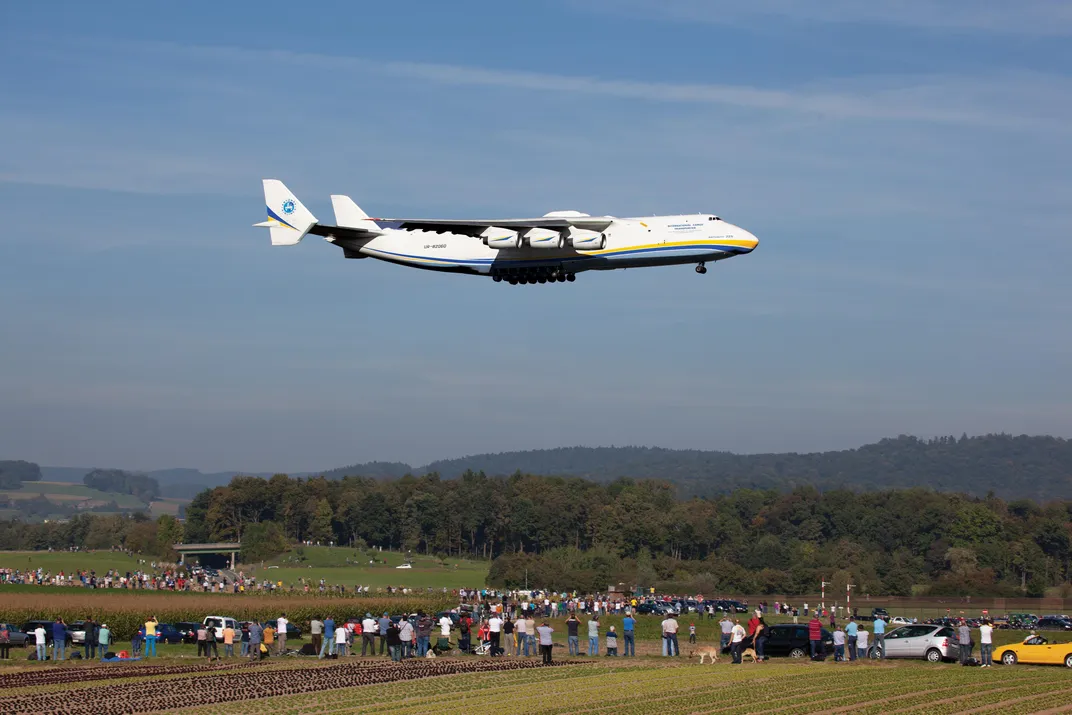
Expensive Ticket
A year after transporting the heaviest cargo ever, the An-225 took on the longest: a pair of wind turbine blades, 139-feet long, flown from China to a lab in Denmark for stress testing. “There was just enough space left to open the door for our technicians to go upstairs into the crew compartment,” says Blagovisniy, who adds that initially the customer deemed the airlift, which cost more than $1 million, too expensive and looked into sea shipping. “The next day they called back and said sea shipping would take 30 days, so they would lose significantly more money by waiting to start production this long. We delivered the piece in 10 hours.”
Chartering the An-225 is expensive because its six engines burn up to 22 metric tons of fuel per hour from its 370-ton-capacity fuel tanks. Customers must also pay for its return trip from its base in Gostomel, a cargo airport near Kyiv owned by Antonov. Airlifts are progressively more expensive the farther from Kyiv they occur, with jobs involving the Americas and Australia usually exceeding $1.5 million.
“The An-225 is around 40 percent more expensive to charter than the An-124 and costs between $55,000 and $60,000 per hour,” says Dmitry Grishin, an independent airfreight specialist who has worked with a range of cargo airlines. “The energy industry has been the most frequent charterer. The main considerations are time versus cost: If you’re on a large infrastructure project and you need to deliver a big cargo, the options you’re faced with are either sea freight—and wait weeks for delivery—or chartering a plane and save a month or more. If you’ve invested billions into a project, a one-month head start can make a big difference.”
There are not that many potential clients for the An-225’s services, and Antonov says that on average the airplane completes only around 10 to 12 airlifts a year. “Antonov is using the right pricing policies, because the aeroplane has a very limited market and they have to offset their high maintenance and upkeep costs,” says Grishin. “It can take both weight and volume, and this is its unique feature, which makes it stand out. But as we go along, its use will remain limited.”
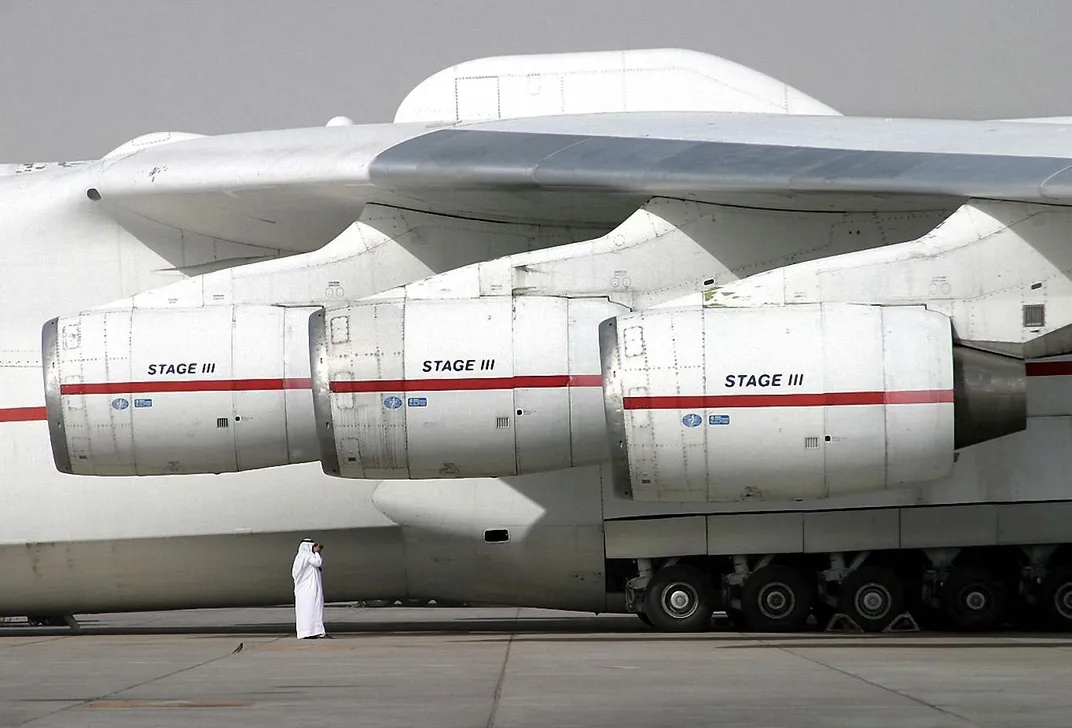
Hidden Twin
The volume capacity of the An-225’s cargo bay exceeds 1,000 cubic meters, which has proven useful during the pandemic to transport large quantities of medicine and personal protective equipment from China, setting yet another record for volume of transported cargo. “The An-225 was perfect for the mission—it’s cavernous,” says Neil Dursley of Chapman Freeborn, who chartered the airplane. “The challenge was to load thousands of small cartons manually onto the aircraft. It took hours to do that, as the An-225 was designed for enormous pieces of equipment, so this was unusual. But it was a huge success.”
Before these flights, the airplane had been grounded for 18 months for the latest round of refurbishments, including a new power management system. “Antonov has been masterful in keeping the aircraft going, and it’s proven to be a very successful niche aeroplane,” says Grishin. “It’s good to see that it played a vital role in the pandemic.”
For an airplane that prides itself on being unique, it might come as a surprise that it has a hidden twin, whose construction was halted in the 1990s. The unfinished airframe is well preserved in an Antonov hangar in Kyiv. “Even if we assembled it, it would cost at least $450 million to modernize it, and the company is not ready for such an investment, considering market demand,” says Blagovisniy.
There is no airplane like it in the works anywhere in the world. Truly one of a kind, the An-225 will likely stay that way for the rest of its lifespan, which Antonov says is 45 years, or until 2033. Many more records can still be broken.
Jacopo Prisco is a science and technology journalist based in London who has written extensively for CNN.

